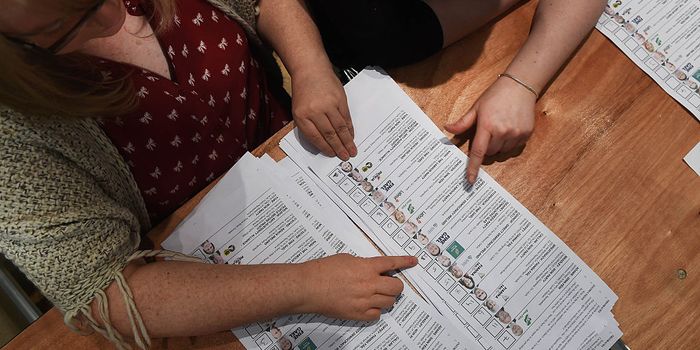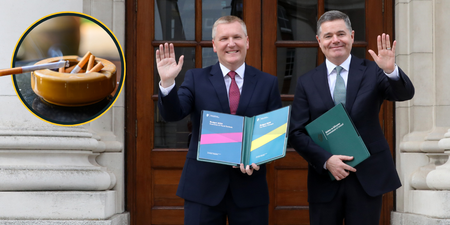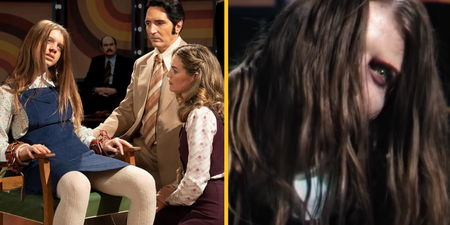It’s PR-STV’s time to shine, baby.
One of life’s small mercies is that, generally speaking, we get to go roughly five years at a time without thinking about Proportional Representation through the Single Transferrable Vote, Ireland’s almost-unique voting system.
The only other sovereign state that uses the same system for its parliamentary elections is Malta. Otherwise, every single other democracy in the world has thought about it and concluded: “Nah, not for us.”
How does it work?
Those of you who picked up the coveted A in your CSPE Junior Cert might remember that typically, voters are advised to vote by putting numerical preferences in the boxes all the way down the ballot, from first to last, starting with 1. The 1 is usually easy enough, but it’s after the first preference that people tend to lose sight of how the system works.
After the first preferences are counted, anyone who has met the quota will be elected, and their second preferences from their surplus will be distributed among the remaining candidates. If nobody meets the quota, the candidate with the least votes is eliminated, and their second preferences are distributed. And on it goes until everyone is eliminated or elected.
For a more granular explanation of this process, here are some children:
https://twitter.com/news2dayRTE/status/1225097862847090688?s=20
As often happens before a general election, confusion around this system is renewed. As the prevailing political attitudes in Ireland diverge further apart, concern has grown among voters about what their low-down preferences could do for candidates that they specifically want to keep out of power.
Put simply, nobody wants to do any favours for the parties and candidates that they don’t like. So what is the best way to use PR-STV in a way that reflects your values?
Say, for example, you might be somebody who has no desire to vote for Party X or Party Y. You don’t even want to legitimise their presence on the ballot by giving them your derisory bottom two preferences. You’d prefer to leave both boxes blank. No transfers for anybody.
But this is where the idea of preference becomes so important. You might dislike both Party X and Party Y, but if you much prefer one of those candidates over the other (maybe you don’t like Party X, but you absolutely cannot stand the idea of Party Y getting in) then your vote can reflect that, and you are given the opportunity to do that by ranking them in order of preference.
The argument for putting a number next to candidates you don’t really like is that it could end up making the difference in keeping out somebody that you hate even more.
Still, if you do give Party X a very low preference, there remains a chance that your vote will help them get elected. That’s the argument against putting a preference, however low, next to the candidates you don’t really like. As long as you put a number beside their name, you could be helping them.
If you find many candidates equally disdainful then you’re safe to leave all of their boxes blank and be along your merry away.
Given that PR-STV is so weird, one might ask why we use it?
The easiest answer to give would be that the alternatives are significantly worse.
Of the other systems, first-past-the-post is perhaps the most common, and has the potential to be catastrophically unrepresentative. Hypothetically, in a FPTP system, you could have 100 one-seat constituencies contested by two parties: Red and Blue. The Reds could win each constituency by 51%-49%, thereby winning all 100 seats even though the country is clearly quite evenly split in terms of its preferences.
It has happened in the United Kingdom that parties pick up large swathes of the popular vote but end up with no seats at all.
France, on the other hand, uses a two-round run-off system. Any number of candidates go up against each other, and if none of them manage to get more than 50% of the vote in the first round, then the top two are sent through to a second round. The problem here is that you could have six pro-milk candidates standing in the first round, against two anti-milk candidates.
The public might be 55% pro-milk, but if their votes are spread evenly among the six pro-milk candidates, then it’s the two anti-milk candidates who will progress to the final round. This is called the “spoiler effect”.
Then of course, there are systems like the US’ electoral college, where constituencies are weighted based on calculations regarding things like population. This is only used in presidential elections, but it is also pretty disastrous, and two of the last five elections have seen the candidate with the most votes lose the election.
In light of the other options, trusty-but-tricky PR-STV remains our first preference for now.
LISTEN: You Must Be Jokin’ with Conor Sketches | Tiger Woods loves Ger Loughnane and cosplaying as Charles LeClerc





















































